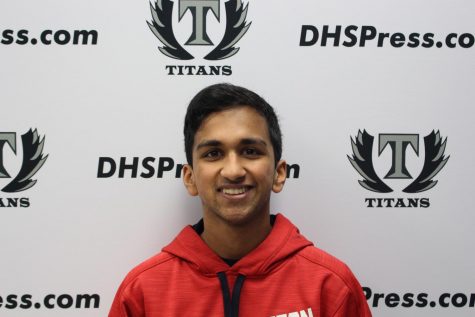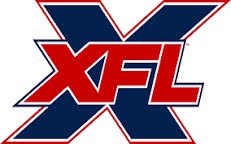Satoransky Stabilizes Wizards as They Await Wall’s Return
For most of the season, the Washington Wizards were average, middling through a season filled with inconsistent play and lackluster effort. On Christmas, they came back and defeated Kyrie Irving and the Boston Celtics, and then lost to the lowly Atlanta Hawks in their next game.
That theme continued throughout the season, as the Wizards would beat talented teams and then come out with no effort the next night. Then John Wall got hurt and many felt the Wizards’ season was over.
Instead, the Wizards have done well without Wall, with a record of 12-6 since he was injured. And it’s not like they’ve just been beating up on bad teams, they’ve had quality wins over playoff contenders like the Thunder, Raptors, and Cavaliers.
There have been many reasons for the improved play, but the biggest has been the play of Tomas Satoransky, who’s done an incredible job as Wall’s replacement.
How has Satoransky, in his second NBA season, done this? He wasn’t a good player last year, but this year, he’s become an above average point guard for the Wizards.
While point guards are supposed to have the ball in their hands, Satoransky’s value is because of what he can do without it. He’s constantly in movement off the ball, cutting well to get open shots. According to NBA.com, Satoransky is shooting 51 percent on catch and shoot three-point jumpers, an excellent mark that ranks 1st in the league.
Since he isn’t ball dominant, Satoransky is able to involve the other four players on the court extremely well. Bradley Beal has evolved into a true star this year, averaging career highs in points per game, assists per game, and field goals attempted per game.
Otto Porter Jr. has seen a similar evolution in his game, as he’s become much more aggressive with his shot selection. The play of Satoransky has certainly been a contributing factor to his play, as his movement off the ball puts Porter in much more advantageous situations.
The Wizards starting lineup of Satoransky, Beal, Porter, Markeiff Morris, and Marcin Gortat outscores their opponents by 10 points per 100 possessions. The small-ball lineup, in which the Wizards replace Gortat with Kelly Oubre, is one of the best five-man lineups in the whole NBA, outscoring teams by an astronomical 33 points per 100 possessions.
Satoransky stands at an imposing 6’7”, giving him great size at the point guard position. That coupled with his quick feet and active hands make him a good defender of point guards.
His background also helps him. Satoransky plays every game like he has a chip on his shoulder. Every team in the league passed on the chance to draft him in the first round and he had to fight and claw to get a job as the backup point guard, prying the spot away from Tim Frazier.
That chip gives him the edge to dive on the court for loose balls, scrap with players much taller than him for offensive rebounds, and make hundreds of plays over a season that never show up in a box score. It becomes infectious, and eventually the whole team begins doing all the little things that make good teams great teams.
How should the Wizards use Wall and Satoransky when the former becomes healthy? First off, if he’s healthy, Wall should start. While Satoransky has done great in his time as starter, he’s got some flaws. He doesn’t have an exceptional first step or handle, leaving him susceptible to teams who have good defensive guards.
We saw these issues against teams like the Warriors and Celtics, who aggressively trapped Satoransky, pushing him back to half court and forcing the Wizards to run their offense from 40 feet away from the basket. Wall, on the other hand, has the requisite athleticism and speed to penetrate a defense, a skill that’s extremely valuable in the playoffs.
When Wall returns, Satoransky should still play a key role as the team’s backup point guard. Brooks can’t mess around and play Frazier or the recently signed Ramon Sessions in the playoffs. If you partner Satoransky with at least one other starter, preferably Markieff Morris, who’s played well with him on the court, he can be a productive player.
Washington can also continue to play the current starting lineup of Satoransky, Beal, Porter, Morris, and Gortat. They all have good chemistry together, and taking Wall out a bit earlier serves two purposes. It allows Wall to get back into basketball shape after not playing for over a month, and, also allows Wall to play with the bench unit, giving them a dynamic player off the dribble to mitigate their issues with individual shot creation.
Brooks should also consider playing Satoransky at the shooting guard position. He has the size and shooting ability that would make him a clear upgrade over the backup shooting guard right now, Jodie Meeks. Meeks has struggled this year as a sharpshooter, only shooting 31 percent from behind the arc, making Satoransky and his 47 percent seem that much better.
There’s one lineup, one that could be devastating offensively, surrounding Wall with four great shooters that can all make plays for themselves. Wall, Satoransky, Beal, Oubre, and Porter would be an incredible lineup. Zachary Rosen of WashingtonWizards.com called it the “Wizard of Oz” lineup.
There are serious concerns with that lineup. Players like LeBron, Giannis, and Ben Simmons who would take advantage of the lack of rim protection and bulldoze their way to the hoop and score at will and dominate the glass as well.
But, it could be effective against certain teams because of its ability to switch every single screen without creating mismatches and because of the aforementioned abundance of shooters.
Satoransky is a weapon and must be used as such. He gives Washington an answer at the backup point guard position, and his defense, shooting, and playmaking make him a useful asset for the playoffs.

Varun Shankar is a senior at Dominion High School. He has always wanted to be a journalist, largely because of its writing focus. His love of sports then...






